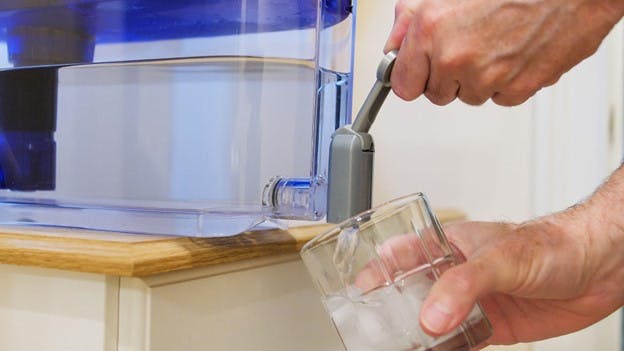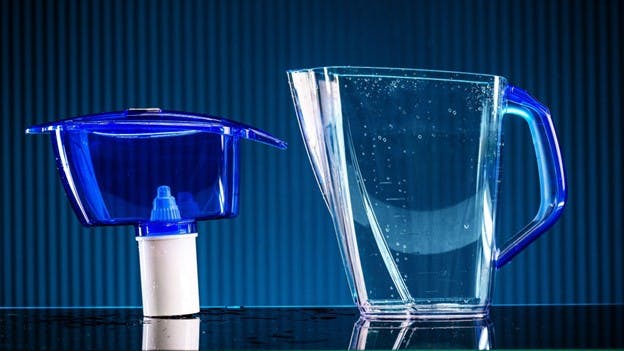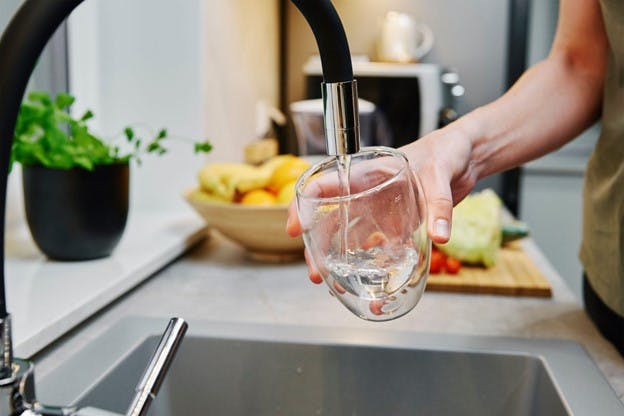June 2023
All About Water Filter Pitchers: Do They Really Work?
There’s nothing quite like a cold glass of clean water on a hot day. That first crisp sip is heavenly. We all want the freshest tasting water, not something that feels like drinking from a chlorinated swimming pool. Taste is a big reason why water filters have taken off in popularity over the years.
One of the most popular types of water filters is water filter pitchers. They’re cheap, attractive, and easy to grab right off the shelf while you’re shopping.
If you’re using a water pitcher filter at home or just thinking about getting one, you're probably wondering just how effective they really are and what sorts of contaminants they actually filter out. And that’s exactly what we intend to answer.
In this article, we’re going to tell you all about water filter pitchers and answer once and for all if they are worth the time it takes to fill up and the space they take up.
What Are Water Filter Pitchers?
Water filter pitchers are water pitchers with a filter mechanism built in to them. They usually consist of two chambers. You pour unfiltered water into the top. The water trickles down through an activated carbon filter cartridge at the bottom of that chamber. Once the water makes its way through the filter cartridge, it is collected into a second chamber at the bottom of the pitcher where you can now use the ready-pour spout to neatly pour the filtered water into a glass, pot, or your pet’s water bowl.
Most water filter pitchers are very simple and use inexpensive but effective filter technology. They are not meant to remove everything and usually their biggest benefit is reducing that chlorine taste. There have been some pitchers in recent years that reduce contaminants like lead.
What Are Water Filter Dispensers?
Water filter dispensers are stationary as opposed to a pitcher that you lift to pour. Usually there’s a pour spout in the front of the unit for convenience.
These have a few advantages to pitchers:
- They usually have a higher capacity than the standard 8-12 cup pitcher
- They can sit right on your countertop or in your fridge if you have the space
- You can pour a glass as soon as enough water filters down, versus waiting for a water pitcher to be done filtering to avoid a spill
Their size allows for a larger and more effective water filtration system that handles a wider variety of contaminants
Some of the higher quality models are ANSI/NSF certified or certified by the Water Quality Association (WQA) for chlorine and lead reduction but they can also handle VOCs like pesticides as well as emerging water threats like pharmaceuticals.
How Do Water Filter Pitchers Work?
Popular models like the standard Brita filter or Pur pitcher all work in a similar way. Unfiltered water is poured in and gravity-fed through an activated carbon filter cartridge. The activated carbon attracts certain impurities in the water and traps them as the clean water flows through it.
Because water needs to stay in contact with the activated carbon for enough time for the filter system to work, it can be a frustratingly slow process to fill a pitcher with a higher cup capacity. You should also be aware that keeping it full is important because if the bottom of the filter isn’t resting in water, it can dry out.
Do Water Pitcher Filters Really Work?
Water filter pitchers use a small amount of activated carbon for water filtration. Activated carbon is a very reliable filter media but it is limited in what pollutants it can remove — especially when used in smaller amounts.
That’s why when you look at the marketing for the standard filters from most filter pitcher companies, the consistent claim you’ll see that it improves taste by reducing chlorine. If you’re concerned about something else coming out of your faucet like fluoride or hard water minerals like calcium and magnesium, you’ll need something more substantial than a water filter pitcher.
While new technologies like those found in the Brita Elite filter (previously called the Brita Longlast filter) remove some heavy metals like lead and cadmium, doing so often means it takes even longer for water to pass through the filter.
Do Any Water Filter Pitchers Remove Bacteria?
Water filter pitchers are not known to remove bacteria, viruses, and pathogens. In fact, because they remove protective chlorine, water pitcher filters run the risk of becoming a breeding ground for bacteria.
It is recommended that you empty the pitchers and clean them frequently. Water sitting inside the pitcher can grow bacteria at a much faster rate than non-filtered tap water.
How Often Should You Clean a Filtered Water Pitcher?
Regular maintenance on your water filter pitcher is imperative to keep it functional and prevent bacteria and mold growth.
Most replacement filters have a lifespan of about two months or 40 gallons. Some brands even have an indicator light that tells you when it's time to replace the filter based on how many pours you've made. Keeping the pitcher full of water can help maintain your filter life because it will prevent the bottom of the filter from drying out. If it does dry out, soak the filter for 15 minutes before using it again.
Some of the new long-lasting filters can be used for six months before needing to be replaced. A common complaint of these long lasting filters is that they have a lower water flow rate than their counterparts.
Beyond replacing the filters, you should be taking the pitcher apart at least weekly and sanitizing it. Mold and bacteria can grow inside the water basin very easily because the water has had disinfectants like chlorine removed by the filter. If you store your pitcher or dispenser on the counter, you’ll want to clean it more frequently. Any water left for several days outside of the refrigerator should be dumped.
What Are the Advantages of Water Filter Pitchers?
While these pitchers usually only focus on taste improvements, better tasting water is a satisfying outcome. Some of the advantages of water filter pitchers are:
- Very portable way to improve your water quality
- Inexpensive to buy and easily purchased at retailers like Walmart and Amazon
- Good for people who rent or move a lot and want better tasting water in each home
- Come in different shapes and sizes to fit in your fridge
What Are the Disadvantages of Water Filter Pitchers?
Water filter pitchers and dispensers are great tools to increase the taste of your water supply but they also have a lot of disadvantages:
- Most are very limited in the contaminants they remove. The majority don’t remove much more than chlorine even though there are thousands of potential contaminants in tap water.
- Filling them can take a long time and with pitchers, you can’t get water from them when they are filling because tipping them would cause water to spill.
- You need to refill it each time you take any water out so the bottom of the filter is always submerged in water.
- They need to be cleaned frequently if you want to continue getting safe, great tasting water
- You need to replace the filters often which is expensive and easy to forget.
Can Water Filter Pitchers Cause Health Issues?
Water filters need proper maintenance and cleaning or they can breed bacteria and mold that could end up in your drinking water. Depending on the type of bacteria and mold, it could cause health issues. Also, you need to be aware of what your water filter pitcher removes and what it doesn’t. If you know your water is contaminated with something that could make you sick, don’t expect even the best water filter pitcher will make the water safe to drink.
Are Water Filter Pitchers as Good as Home Filtration Systems?
While they each have their own pros and cons, water filter pitchers can’t filter out much compared to the more powerful home filtration systems. Pitchers are small and simple, so they don’t work nearly as efficiently as a whole house or under counter water filtration system.
Water filter pitchers also struggle to handle higher usage. It takes several minutes to filter just a few cups of water and one replacement filter is only good for about 40 gallons over two months. When you consider that your average household goes through around 300 gallons of water per day, you can see the advantage of being able to get filtered water just by turning on your tap vs. pouring a few cups at a time into a pitcher.
What Is the Best Way to Filter Water?
There are many ways to filter water. If you’re looking for a quick improvement in taste by reducing chlorine, a water filter pitcher might be what you're after. However, if you want real quality improvement, nothing beats a good multistage home filtration system.
HomeWater’s UPSTREAM 4-Stage Whole Home Water Filter uses multiple water filter technologies to give you superior water quality from every faucet in your home. With a flow capacity of 1 million gallons, this whole house filtration system will remove bacteria and algae. Add a salt-free water conditioner and it will even handle your hard water.
If you’re a renter and need something that’s easy to install and take with you, check out our HomeWater EZChange 2-Stage Under Counter Water Filter. It installs easily under any kitchen sink in 15 minutes and it connects to your existing faucet line. This 2-stage system is designed to be easy and effective with a flow rate of 1 gallon per minute.
Come and taste how good your water can be with HomeWater.
Related Articles
December 2022
All the Pros and Cons of Countertop Water Filters
February 2023
Here’s How to Find the Best Filter for Well Water
January 2023


